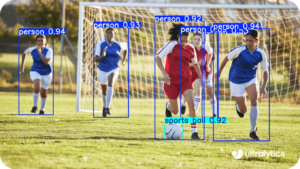Apache Kafka is one of the most powerful distributed messaging systems available, designed to handle massive streams of real-time data. However, one of the critical challenges faced by Kafka administrators and developers is partition rebalancing. Improper handling of partition rebalancing can lead to downtime, increased latency, message duplication, and consumer lag.
In this blog, we will dive deep into how you can avoid Kafka partition rebalancing nightmares by understanding the underlying causes and implementing best practices. We will also walk through a real-time example to illustrate the impact of incorrect partition rebalancing and how to mitigate it.
What is Partition Rebalancing in Kafka?
Partition rebalancing happens when Kafka needs to redistribute partitions among brokers and consumer group members. This process can occur due to:
- Adding or removing brokers.
- Changes in consumer group membership (new consumers joining or existing consumers leaving).
- Leader elections for partitions.
- Topic-level changes like increasing the number of partitions.
During a rebalance, Kafka temporarily stops message processing, reassigns partitions, and then resumes processing. While this ensures fault tolerance and scalability, frequent or unoptimized rebalancing can cause serious performance issues.
Why Partition Rebalancing Can Be a Nightmare
Partition rebalancing can lead to several issues if not managed properly:
- Consumer Downtime: Consumers may stop processing messages during rebalancing.
- Increased Latency: Rebalancing can introduce delays in processing.
- Message Duplication: Improper handling of offsets can result in duplicate message consumption.
- Consumer Lag: Rebalancing can cause consumers to fall behind in processing messages.
- Unstable Cluster: Continuous rebalancing can make the Kafka cluster unstable.
These issues can cripple real-time data pipelines and impact the overall performance of your Kafka-based applications.
Real-Time Example of Partition Rebalancing Gone Wrong
Scenario: An E-commerce Platform’s Order Processing System
Imagine an e-commerce platform that uses Kafka to process customer orders in real-time. Each order is produced as a message to the orders topic, which has 10 partitions. The platform has a consumer group consisting of 5 instances of an order-processing service.
Initially, everything runs smoothly. However, the business decides to scale up the consumer group to 10 instances to handle a spike in orders during a flash sale.
What Went Wrong?
When the new consumer instances joined the group, partition rebalancing was triggered. The following issues occurred:
- Consumers stopped processing messages during the rebalance.
- The rebalance took longer than expected due to large partition sizes.
- After the rebalance, some consumers experienced message duplication because offsets were not properly managed.
- Order processing lagged, causing delays in confirming customer orders.
The flash sale, which was supposed to boost revenue, ended up causing customer dissatisfaction due to delayed order confirmations.
How to Avoid Kafka Partition Rebalancing Issues
To avoid such nightmares, follow these best practices:
1. Tune Rebalance Configurations
Adjust Kafka’s rebalance-related configurations to reduce the frequency and impact of rebalancing:
| Configuration | Default Value | Recommended Value | Description |
|---|---|---|---|
| session.timeout.ms | 10,000 ms | 30,000 ms | Time to detect a consumer failure. |
| max.poll.interval.ms | 300,000 ms | Adjust based on workload | Maximum time between polls to avoid consumer removal. |
| heartbeat.interval.ms | 3,000 ms | 10,000 ms | Frequency of heartbeats sent to Zookeeper. |
| partition.assignment.strategy | range | cooperative-sticky | Prevents unnecessary partition movement during rebalances. |
2. Use Cooperative Rebalancing
Kafka 2.4 introduced Cooperative Rebalancing, which reduces downtime during rebalances. By using the cooperative-sticky assignment strategy, consumers release their partitions in phases, reducing the impact on message processing.
Add the following configuration to your consumer:
partition.assignment.strategy=org.apache.kafka.clients.consumer.CooperativeStickyAssignor
3. Enable Rack Awareness
Rack awareness ensures that replicas are evenly distributed across brokers in different racks or availability zones, reducing the need for rebalancing when a broker goes offline.
To enable rack awareness, set the broker.rack configuration in each broker’s server.properties file:
broker.rack=us-east-1a
4. Monitor Partition Sizes
Uneven partition sizes can cause longer rebalancing times. Use tools like Cruise Control to monitor partition sizes and perform partition rebalancing without downtime.
5. Use Static Membership for Consumers
Static membership prevents Kafka from removing consumers during temporary disconnections, which can trigger unnecessary rebalances.
Set the following property in your consumer configuration:
group.instance.id=order-processing-instance-1
6. Increase Topic Partitions with Caution
Adding partitions to a topic will always trigger a rebalance. Plan partition increases during low-traffic periods to minimize disruption.
7. Automate Partition Rebalancing
Use tools like Kafka Rebalancer or Cruise Control to automate partition rebalancing and avoid manual errors.
Impact of Best Practices on Our E-Commerce Example
After applying the above best practices, the e-commerce platform’s order processing system improved significantly:
| Issue | Before Optimization | After Optimization |
|---|---|---|
| Consumer Downtime | Frequent | Rare |
| Rebalance Duration | 15 minutes | 2 minutes |
| Message Duplication | High | None |
| Consumer Lag | 30 seconds | Near Zero |
The flash sale was a success, with no delays in order confirmations, resulting in increased customer satisfaction and revenue.
Final Thoughts
Partition rebalancing is a necessary process in Kafka, but it can become a nightmare if not managed correctly. By tuning configurations, enabling cooperative rebalancing, and monitoring partition sizes, you can significantly reduce the impact of rebalancing on your Kafka-based systems.
Implement these best practices to ensure your Kafka cluster remains stable, performant, and resilient during changes in consumer groups and brokers. Avoid the nightmare—embrace Kafka’s full potential!
FAQs About Kafka Partition Rebalancing
1. What triggers a partition rebalance in Kafka?
A partition rebalance is triggered by changes such as adding or removing brokers, changes in consumer group membership, leader elections, or increasing the number of partitions in a topic.
2. How does cooperative rebalancing differ from eager rebalancing?
Cooperative rebalancing reduces downtime by releasing partitions in phases, whereas eager rebalancing stops all message processing during the rebalance.
3. What are the risks of frequent rebalancing?
Frequent rebalancing can cause consumer downtime, increased latency, message duplication, consumer lag, and cluster instability.
4. How can I reduce Kafka consumer downtime during rebalancing?
You can reduce downtime by using cooperative rebalancing, static membership for consumers, and tuning rebalance-related configurations.
5. Which tools can help with partition rebalancing automation?
Tools like Cruise Control and Kafka Rebalancer can automate partition rebalancing and ensure smooth operations in your Kafka cluster.




